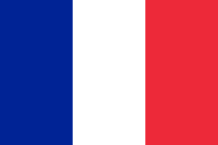MARTINIQUE
 Martinique’s area is 1080 sq km. In the centre of the island there are a range of mountains, among others, Les Pitons du Carbet but, the highest point is La Montagne Pelée with its 1397m. According to the altitude, the vegetation is different. There are bamboos, ferns, creepers, tall trees like gum tree or mahogany in the humid forest. The mangrove grows along the coast. In the southern zones of the island, there is a dry vegetation with cacti, campêche trees, acacia trees, frangipani trees and flowers like bougainvilleas, hibiscus, allamandas.
Martinique’s area is 1080 sq km. In the centre of the island there are a range of mountains, among others, Les Pitons du Carbet but, the highest point is La Montagne Pelée with its 1397m. According to the altitude, the vegetation is different. There are bamboos, ferns, creepers, tall trees like gum tree or mahogany in the humid forest. The mangrove grows along the coast. In the southern zones of the island, there is a dry vegetation with cacti, campêche trees, acacia trees, frangipani trees and flowers like bougainvilleas, hibiscus, allamandas.
The wildlife is composed of opossums (manicous), racoons, venemous snakes called “fer-de-lance”. Among the birds, there are thrusches, blackbirds, hummingbirds or the Martinique trembler, an endangered species.
Agriculture represents a major part in the economy with banana, sugar cane (to make rum and sugar), fruits like pinapple and vegetables. The food-processing industry also tries to develop. There is an oil refinery too. Tourism has become an important economic activity.
Christopher Columbus discovered Martinique in 1502, during his fourth voyage in the New World. The island was inhabited by the Carib Indians who called it Madinina (Island of Flowers). But, it was only in 1635, the first French settlers arrived in this new land. Financed by La Compagnie des Îles and led by Pierre Belain d’Esnambuc, this settlement built a little fort that will become Saint-Pierre, the capital. On October 31, 1636, King Louis XIII of France autorized by decree slavery in the French West Indies territories. Other areas of the island were, quickly, colonized by new settlers. Four years later, in the present location of Fort-de-France, the new inhabitants built a fort above the harbour. By the labour of African slaves, the island was deforested to grow sugar cane. Skirmiches between European colonists and Caribs became frequent. In 1660, the Amerindians were chased out Martinique, definitely.
During the French Revolution period (from 1794 to 1815), the island was occupied by the English. The French planters got richer by selling their sugar on the British market. Because of this British colonization, Martinique did not take part in the French Revolution’s fights and slavery was not abolished in the island in 1794.
In 1815, Great Britain gave up the island to France. Because of the overproduction and the growing of sugar beet in France, the rich planters’ income decreased, their political power fell.
In 1848, the decree of the Abolition of Slavery in the French West Indies was proclaimed.
On May 8, 1902, La Montagne Pelée’s eruption destroyed Saint-Pierre which was regarded as the cultural centre in the French West Indies and killed its 30 000 inhabitants ; there was only one survivor : a prisoner in a dungeon… This natural desaster is the most important in the history of the West Indies. Then, Fort-de-France became Martinique’s new capital.
Since 1946, Martinique was a French Department. After a referendum in 2010, in 2015, the island became a French Overseas Collectivity so, the Regional council and the Departmental council desappeared for only one Assembly with only one president. A prefect represents the French government in the island. Martinique is present in French Parliament with deputies and senators. The Martinicans are French citizens.
Area : 1080 sq km (416,9 sq miles)
Population : 413 000 inhabitants
Capital : Fort-de-France
Languages : French (official) – Creole
Currency : Euro (€)
People : Martinicans
